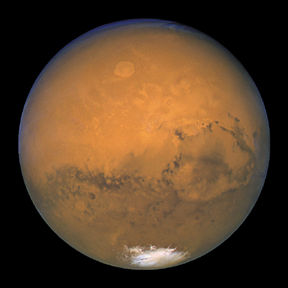
Geotimes Home | AGI Home | Information Services | Geoscience Education | Public Policy | Programs | Publications | Careers

 For the first time,
scientists have convincingly detected small yet possibly widespread amounts of
carbonate minerals in the dust on Mars’ surface. The findings provide new
hints about water on Mars, as well as the history of the planet’s atmosphere.
For the first time,
scientists have convincingly detected small yet possibly widespread amounts of
carbonate minerals in the dust on Mars’ surface. The findings provide new
hints about water on Mars, as well as the history of the planet’s atmosphere. |
Geotimes Home | AGI Home | Information Services | Geoscience Education | Public Policy | Programs | Publications | Careers |